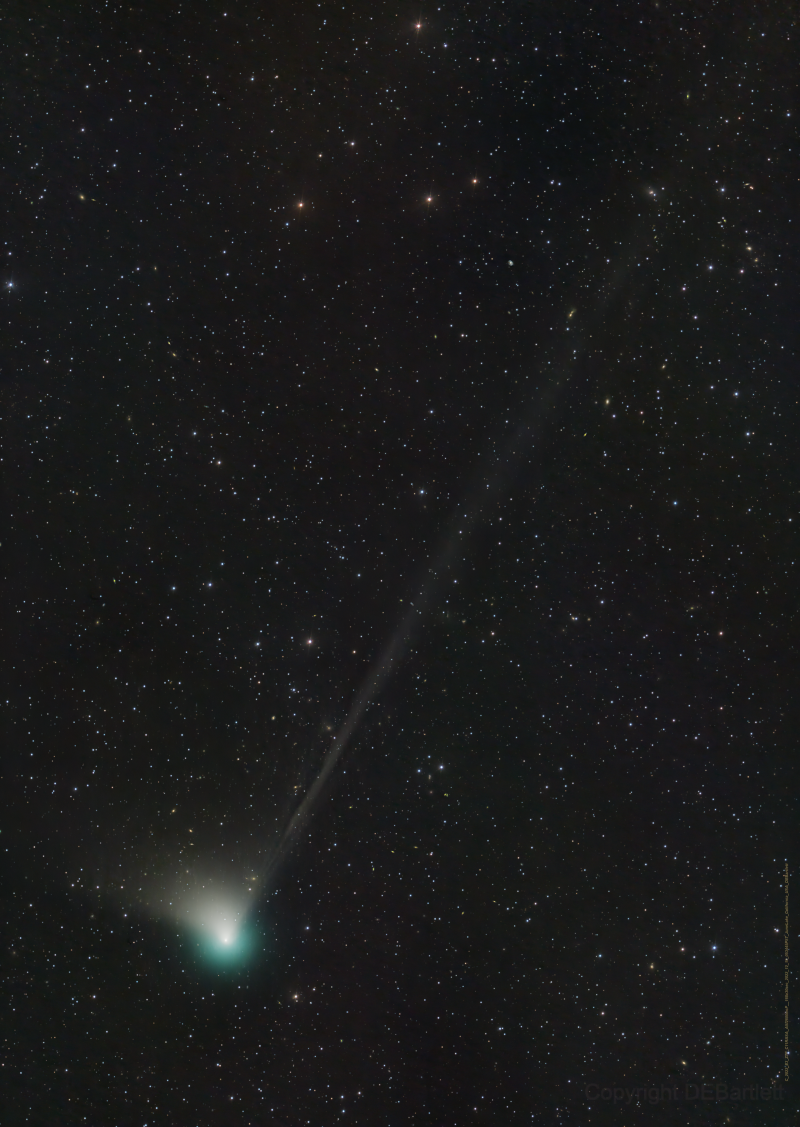彗星2022 E3 (ZTF)
2022年12月24日
Comet 2022 E3 (ZTF)
Image Credit & Copyright: Dan Bartlett
Explanation: Comet C/2022 E3 (ZTF) was discovered by astronomers using the wide-field survey camera at the Zwicky Transient Facility this year in early March. Since then the new long-period comet has brightened substantially and is now sweeping across the northern constellation Corona Borealis in predawn skies. It’s still too dim to see without a telescope though. But this fine telescopic image from December 19 does show the comet’s brighter greenish coma, short broad dust tail, and long faint ion tail stretching across a 2.5 degree wide field-of-view. On a voyage through the inner Solar System comet 2022 E3 will be at perihelion, its closest to the Sun, in the new year on January 12 and at perigee, its closest to our fair planet, on February 1. The brightness of comets is notoriously unpredictable, but by then C/2022 E3 (ZTF) could become only just visible to the eye in dark night skies.
Tomorrow’s picture: stars and mittens
彗星2022 E3 (ZTF)
影像提供与版权: Dan Bartlett
说明: 彗星C/2022 E3(ZTF)是在今年3月初,当天文学家使用兹威基瞬变设施(ZTF)的广域巡天相机时所发现的。从那时起,这颗新的长周期彗星已大幅增亮,目前在黎明前的天空中,它正掠过北天的北冕座。然而如没借助望远镜,它还是太昏暗了。不过,这幅摄于12月19日的出采望远镜影像,精确的显示这颗彗星增亮中的泛绿彗发、短而宽的尘尾、及颀长而暗淡的离子尾,如何在2.5度宽的视野里伸展。在此次穿行内太阳系的旅程中,彗星2022 E3将在2023年的1月12日行进到最靠近太阳的近日点,于2月1来到最近地球的近地点。虽然如众所周知的,彗星的亮度极难预测,但届时C/2022 E3(ZTF)在黝黑的夜空中,有可能增亮到肉眼勉强可见的程度。
明日的图片: stars and mittens

